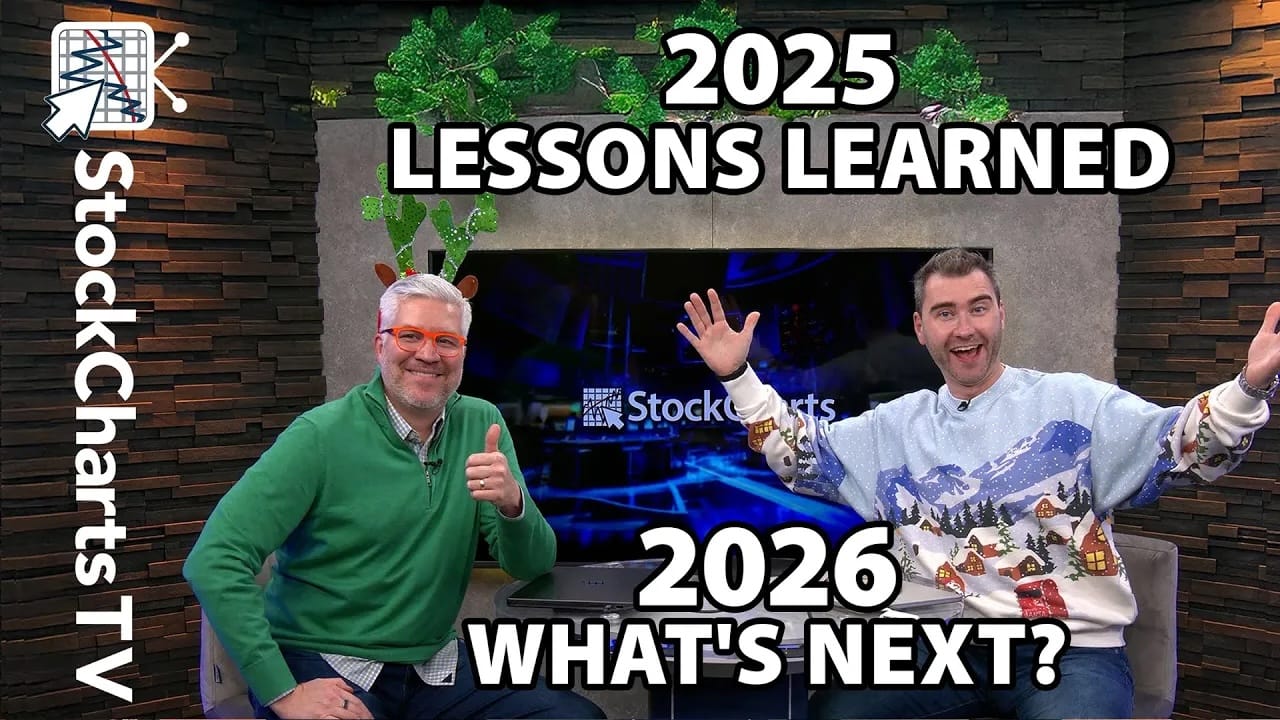SPY forms small falling flag
There is no change on the daily chart as SPY stalls in its resistance zone. Even though the strong July surge and wedge breakout are medium-term bullish, SPY is still on the overbought side and battling resistance. First, the ETF advanced around 10% from its July low (~102 to ~112). A 10% advance in four weeks shows strength, but it also creates a short-term overbought situation. Second, there is still potential resistance around 112. The yellow area shows a resistance zone based on the highs from early June, mid June and early July. In addition, the advance to 112 retraced 50-62% of the April-July decline. Key support is set at 106, but a bullish pullback should be relatively shallow and find support around 108-109.
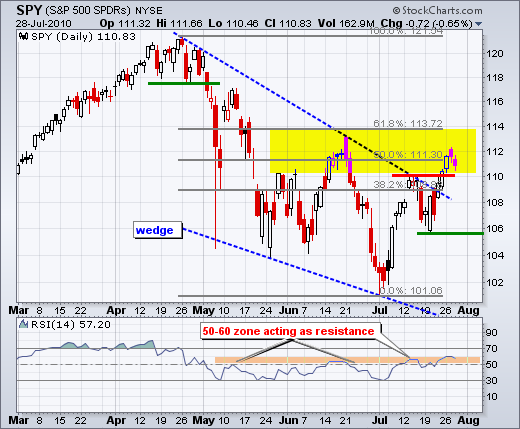
On the 60-minute chart, SPY corrected with a falling flag/wedge over the last two days. Although very short, this looks like a bullish consolidation and a break above flag resistance would signal a continuation higher. RSI hit 50, which is the top of its support zone for this uptrend. The falling flag and RSI move back to 50 represent the minimum pullback expected during an uptrend.
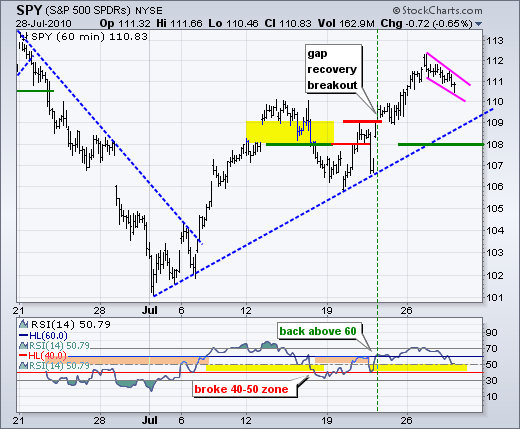
Key Economic Reports:
Thu - Jul 29 - 08:30 - Jobless Claims
Fri - Jul 30 - 08:30 - GDP
Fri - Jul 30 - 09:45 - Chicago PMI
Fri - Jul 30 - 09:55 - U Michigan Sentiment
Charts of Interest: AMLN, ARO, CVS, GS, JCI, MOS
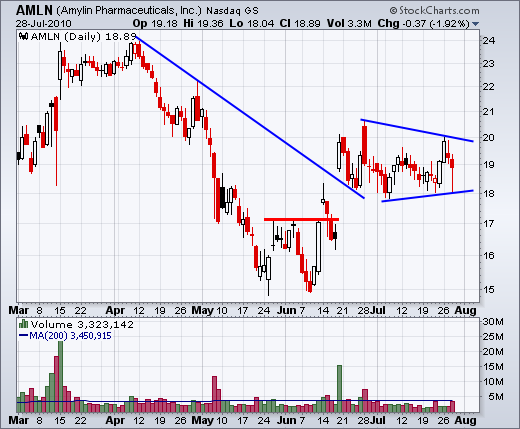
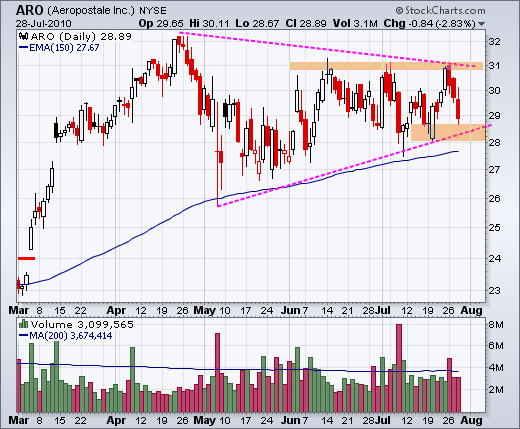
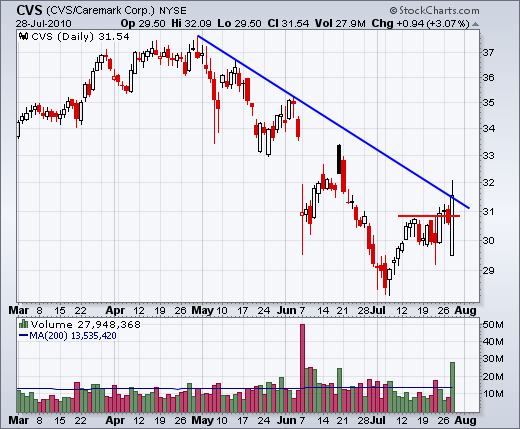
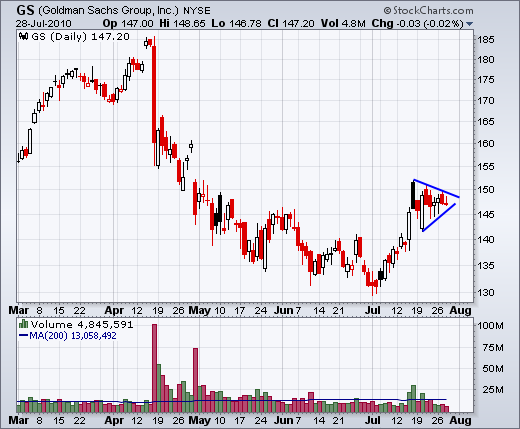
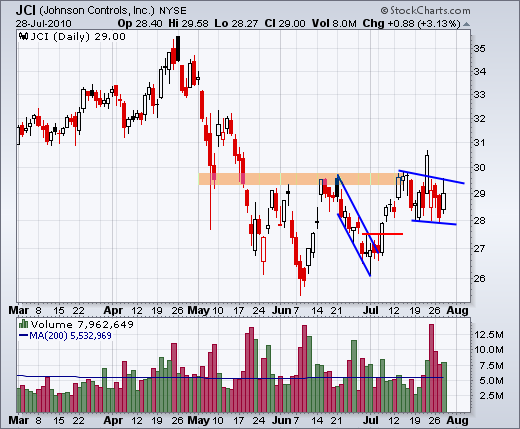
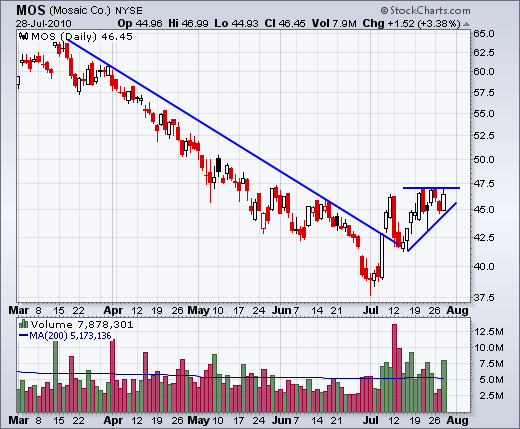
This commentary and charts-of-interest are designed to stimulate thinking. This analysis is not a recommendation to buy, sell, hold or sell short any security (stock ETF or otherwise). We all need to think for ourselves when it comes to trading our own accounts. First, it is the only way to really learn. Second, we are the only ones responsible for our decisions. Think of these charts as food for further analysis. Before making a trade, it is important to have a plan. Plan the trade and trade the plan. Among other things, this includes setting a trigger level, a target area and a stop-loss level. It is also important to plan for three possible price movements: advance, decline or sideways. Have a plan for all three scenarios BEFORE making the trade. Consider possible holding times. And finally, look at overall market conditions and sector/industry performance.



